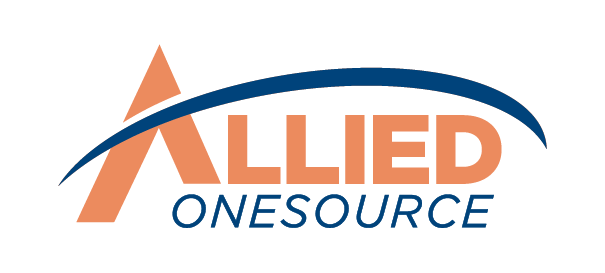Breaking the Productivity Plateau: How to Keep High Performers Engaged
Your best employee just handed in their resignation. You're stunned—they were a top performer, always exceeding targets, mentoring others, and driving results. What went wrong? The truth is high-performing employees don't leave jobs; they leave stagnation.
The moment they feel their work has become too predictable, their growth has stalled, or their contributions are taken for granted, their engagement drops. And once disengaged, they become prime targets for competitors.
Losing a high performer isn't just disruptive; it's expensive. Replacing an employee can cost up to 200 percent of their annual salary in recruitment, training, and lost productivity. Worse, their departure sends ripples through your team because when they go, they take their expertise, efficiency, and often their best ideas with them.
So, how do you keep high-performing employees engaged and productive? The answer lies in understanding why they disengage and implementing practical solutions that reignite their motivation.
Why High Performers Disengage (And Why It Hurts Your Business)
High performers don’t think like the average employee. They’re wired for growth, and once they feel like they’ve maxed out their potential in a role, their engagement starts to decline. When that happens, businesses don’t just lose a good worker; they lose efficiency, leadership potential, and institutional knowledge.
Yet, many companies don’t see it coming. They assume high performers are fine because they’re hitting their targets, solving problems, and rarely complaining. But just because someone isn’t vocal about their dissatisfaction doesn’t mean they’re engaged. Here’s why this happens—and why it’s so costly.
The Work Becomes Too Predictable
The challenge of mastering a role is what drives high performers, but once they've optimized their workflows and fine-tuned their efficiency, they start looking for the next challenge. This is especially true for employees in fast-paced environments. If every project feels like a repeat of the last one, they're no longer growing, they're just executing.
This plateau effect is dangerous because disengagement doesn't happen overnight. At first, they might suggest new processes or ask for more responsibility, but if those efforts aren't met with opportunity, they'll stop trying. And when they stop trying, they start looking elsewhere.
They Don’t See a Future With You
One of the biggest mistakes companies make is assuming high performers will naturally rise through the ranks without a clear path. Many organizations focus their development efforts on underperformers, hoping to bring them up to standard, while neglecting those who are already excelling.
A recent LinkedIn Workplace Learning Report found that many employees would stay longer at a company that invests in their career development.¹ If a high performer looks ahead and sees no clear next step, they'll start exploring options elsewhere.
They don't need an immediate promotion, but they do need to see a trajectory; whether through new challenges, leadership development, or involvement in strategic projects. The best way to retain top talent isn't just paying them more; it's showing them how they'll continue to grow if they stay.
Their Efforts Go Unrecognized
High performers don't just want a paycheck—they want to know their work matters. But recognition isn't about bonuses or awards. For top talent, it's about seeing how their contributions impact the bigger picture, whether it's improving processes, increasing efficiency, or shaping strategy.
The problem is that many companies take high performers for granted. Because they're self-sufficient, they don't get the same feedback as struggling employees. When hard work becomes an expectation rather than an achievement, frustration builds, and that frustration leads to disengagement.
They’re Carrying More Than Their Fair Share
A high performer’s competence often becomes their biggest burden. Because they’re so capable, they frequently end up shouldering more responsibility than their peers. At first, this might feel like an opportunity, but if it’s not managed properly, it quickly turns into resentment.
When companies rely too heavily on their best employees to fix problems, take on extra projects, or compensate for weaker team members, those employees start to feel exploited rather than valued. The moment they realize that their extra effort is not leading to new opportunities but simply being expected, their loyalty starts to wane.
Their Leaders Fail to Inspire Them
High performers don't just work for a company—they work for leaders who challenge and support them. Too often, managers either micromanage or neglect their top talent, and both approaches kill motivation.
Micromanagement suffocates ambition by second-guessing decisions and removing autonomy. Neglect is equally damaging—assuming someone doesn't need coaching or growth opportunities because they're already performing well. If your high performers aren't being developed, they won't stick around.
How to Keep High-Performing Employees Engaged and Productive
The reality is top performers need to be actively re-engaged over time. So, how do you ensure your top talent doesn’t hit a plateau? You challenge them before they become disengaged.
Identify Your True High Performers (Beyond the Obvious Metrics)
Most companies think they know who their high performers are—the ones hitting sales targets or finishing projects on time. But real high performers often fly under the radar. They're the people others go to when they're stuck, the ones who prevent problems before they blow up, and the informal mentors that new hires naturally gravitate toward.
Look for the employees who actually fix things instead of just working around them. They suggest better ways to do tasks, connect people who should be talking to each other, and solve issues that everyone else just accepts as "how things work here." These people create value that's harder to measure but way more important than meeting basic targets.
Diagnose Their Disengagement Stage
High performers don't just suddenly quit; they check out gradually in predictable stages.
- Stage 1: They seem less excited about routine stuff but still volunteer for new projects.
- Stage 2: They stop taking initiative and participate less in optional activities, though they still do their job well.
- Stage 3: They've stopped offering ideas, won't take on extra work, and openly talk about career frustrations.
- Stage 4: They're mentally gone—doing the bare minimum and probably already job hunting.
Catch them at Stage 1 or 2, and you can still turn things around.
Read More: Disengaged at Work? 6 Tips on Reigniting Workplace Motivation
Combat Predictability with Strategic Challenge Injection
When high performers master their role, boredom kills their motivation faster than anything else. Give them stretch assignments that push them into new territory; leading a cross-department project, temporarily running a different team, or tackling a company-wide problem that's been sitting around unsolved.
Set aside time for them to work on innovation projects, process improvements, or mentoring others. This isn't busy work—it's letting them use their skills on stuff that actually matters while keeping them mentally engaged. Their need for challenge becomes an advantage for everyone.
Create Visible Career Trajectories
High performers need to see where they're headed, but most career paths are either unclear or unrealistic.
Show them multiple ways to advance, through management, technical expertise, or becoming a cross-functional specialist. Make it concrete with specific skills they need to develop and realistic timelines.
Let them shadow people in roles they want. This gives them a real look at their future options while showing you're serious about their growth. Regular career talks should focus on what they actually want to do, not just what openings you have available.
Redistribute Workload Strategically
High performers often get punished for being good at their jobs—they end up carrying extra work because they're reliable. This builds resentment fast, even among your best people. Do regular workload checks to spot when someone's doing more than their share and fix the imbalance.
Don't just lighten their load—optimize how you use their expertise. Move routine tasks to other team members and give high performers the complex, important stuff that matches their abilities. This develops your whole team while making sure top talent works on things that actually matter.
Provide Recognition That Matches Their Impact
High performers want to know their work matters, not just hear empty praise. Connect their contributions to real results. Instead of "great job," say "your new process cut project time by 30 percent, so we could take on three more clients this quarter."
Give them visibility with executives through project presentations, leadership opportunities, or involving them in planning discussions. This shows their expertise influences real decisions, not just daily tasks.
Read More: Building a Culture of Continuous Feedback: The Key to Employee Development
Retain your top talent with Allied OneSource
High-performing employees drive your business forward – with Allied OneSource, you can keep them engaged and productive. Our staffing strategies and retention expertise help you build teams that grow with your company.
Ready to take your workforce strategy even further? Download our Workforce Optimization guide to learn how to align your entire team with business goals for maximum ROI. Alternatively, you can contact us today to develop a custom retention plan tailored to your workforce.
Reference
1. The rise of career champions. (2024, October). Workplace Learning Report 2025. https://learning.linkedin.com/resources/workplace-learning-report











